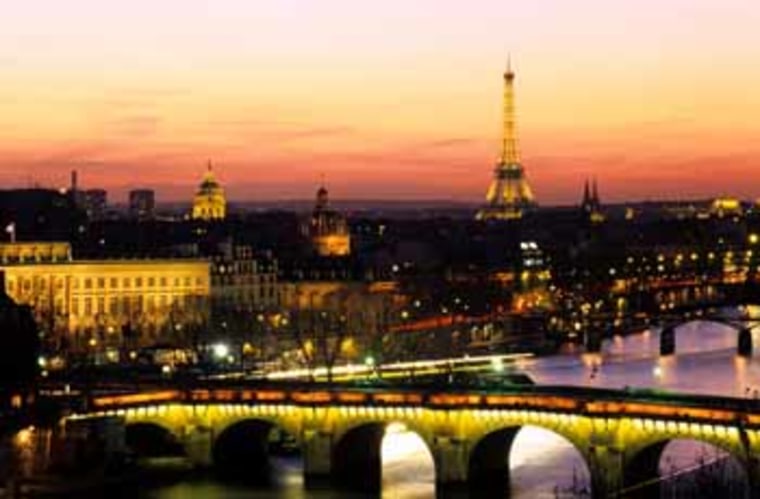What turns an average workaday bridge into something extraordinary? While you could make a plausible argument that any bridge is great as long as it doesn’t fall, a truly great bridge is one that not only serves a structural function but does it with originality, ambitious engineering, and beauty.
Take the Pont Neuf, in the heart of Paris. It’s certainly no feat of engineering, though the fact that it’s held up since 1607 counts for something. But the way it invites you to amble across the Seine, with its broad arches and turrets, and stairway access to the lovely little prow-shaped park at the edge of the Ile de la Cité, makes it a kind of poetry in stone. Similar aesthetic considerations apply to the medieval Charles Bridge in Prague and that little old bridge, the Ponte Vecchio, in Florence.
Which is not to say that size doesn’t matter in measuring up bridge greatness. Structure, setting and scale are all factors, but ultimately, technical considerations—suspension or cable-stayed? Open-spandrel segmental or drawbridge?—take a back seat to that slightly more inchoate quality called beauty.
Sometimes there’s beauty in simplicity — the gossamer Vasco de Gama Bridge across the Tagus River in Lisbon, the longest bridge in Europe, is a fine example, and sometimes there’s beauty in stately ornamentation: Consider London’s Tower Bridge. Lengthwise, the Akashi-KaikyoBridge near Kobe, Japan, is the longest suspension bridge in the world, but it lacks the wow factor of a certain other suspension bridge on the other side of the Pacific.
Some of the greatest bridges have great symbolic value, too. They are iconic, and it would be difficult to imagine them anywhere else. Case in point: New York’s Brooklyn Bridge also has great symbolic value. New York architect partners Peter Stamberg and Paul Aferiat single out the Brooklyn Bridge as a great one in part because of the history of its designer, the inventor of steel cable wire, John Roebling.
“The Roebling story is fascinating,” says Stamberg, referring to the fact that the German immigrant engineer died before the span between Manhattan and Brookyn was completed in 1883. Hi son, and later his son’s wife, were left in charge of the actual construction; altogether a family business, with a legacy of spun wire cables and Gothic piers soaring above the East River.
Travel book writer Richard Koss, who co-authored "Lonely Planet’s New England" guide likes New Orleans’ Lake Pontchartrain Causeway: “It has two parallel bridges over the lake, one of which is the longest in the world,” he says. He’s also high on Chicago’s Michigan Avenue Bridge, “a drawbridge in downtown with bas-relief sculptures depicting events of the city’s history.”
Florida’s Seven Mile Bridge across the Keys is also impressive in terms of length, and smaller bridges do have their charms. But the greatest American bridges generally have a good degree of height and length going for them, as well as remarkable natural or urban settings (and oftentimes both). They’ll even induce a gasp or two as you cross them: Consider the Bixby Bridge on California’s spectacular Big Sur coastline.

Europe is truly the world innovator when it comes to modern bridge design. It started in 1779 with the completion of England’s Coalbrookdale Bridge, a cast-iron gem that Stamberg calls “the progenitor of all modern bridges.” Fast forward to 2004 and the opening of British architect Norman Foster’s colossal Millau Viaduct, which spans the valley of the Tarn River near Millau in France, with a total length of 8,071 feet.
Bridges in Paris, Florence and Venice may be unmatched for Old World charm and splendid settings, but at 890 feet vertical, the Millau’s road bridge deck is the highest in the world, and they say driving across it feels like sailing through a cloud. Now that’s a thrill worth leaving home for.
